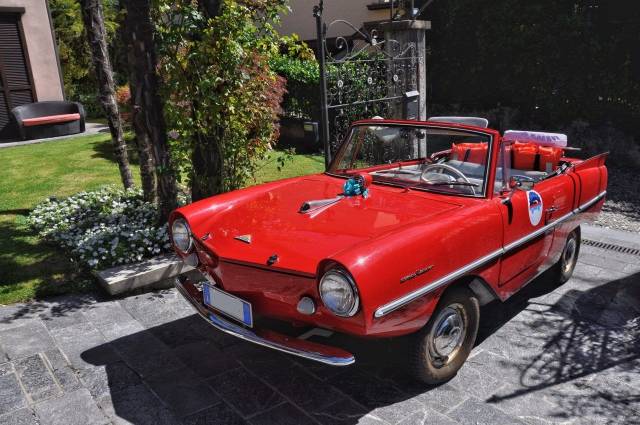- Car
- Amphicar (3 offers)
Amphicar Classic Cars for Sale
The Amphicar 770 stands apart as the only mass-produced amphibious car, blending driving and boating in a single machine. Developed in Germany, this convertible pairs a Triumph engine with an all-steel body, offering both novelty and engineering prowess. With a production run of under 4,000 units and a unique driving experience both on land and water, the Amphicar presents a rare opportunity for classic car enthusiasts seeking something truly unconventional.
Search results
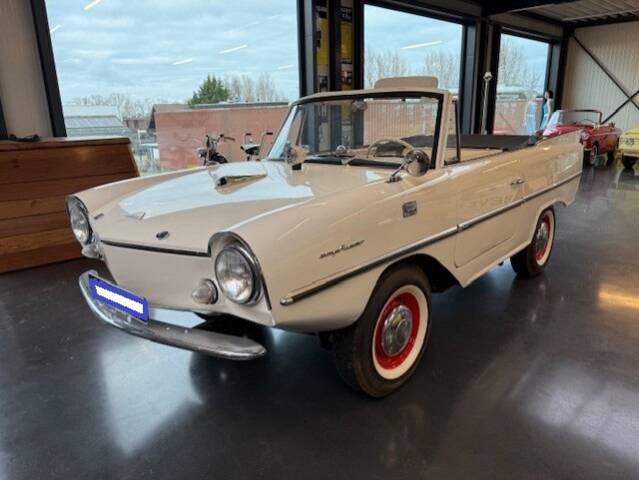
1967 | Amphicar 770
AMPHICAR 770
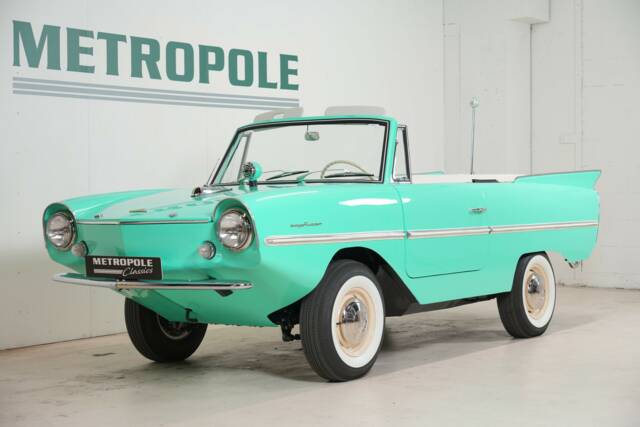
1964 | Amphicar 770
Amphicar 770 M1065
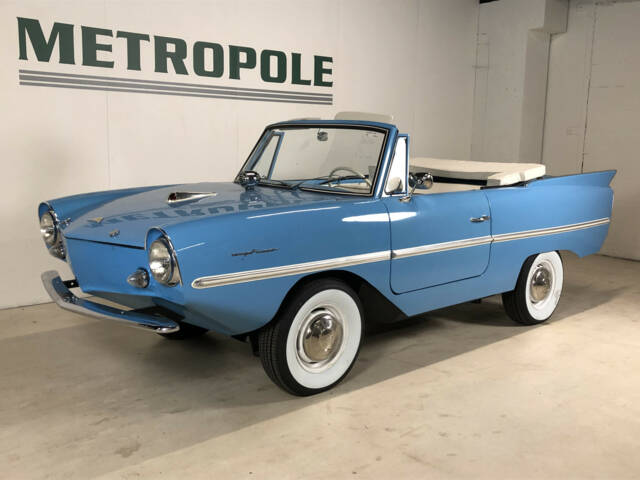
1962 | Amphicar 770
Amphicar 770 M0825
Amphicar listing references from Classic Trader
Below you will find listings related to your search that are no longer available on Classic Trader. Use this information to gain insight into availability, value trends, and current pricing for a "Amphicar" to make a more informed purchasing decision.
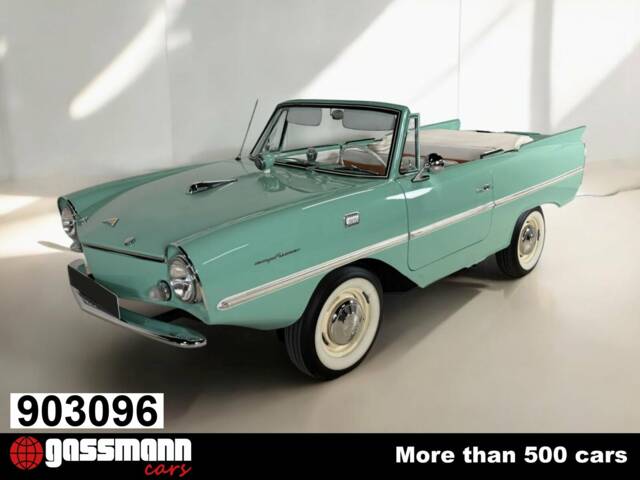
1964 | Amphicar 770
Amphicar 770
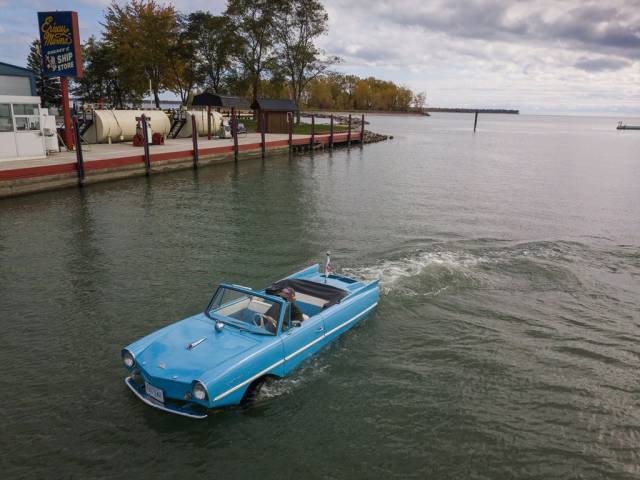
1962 | Amphicar 770
1962 Amphicar 770

1965 | Amphicar 770
Amphicar 770
1962 | Amphicar 770
Original amphibious car
A German Vision: The Story of the Amphicar
The Amphicar, engineered by Hans Trippel, was unveiled at the 1961 New York Auto Show and manufactured in Germany at IWK factory sites in Berlin and Lübeck. Inspired by earlier German amphibious vehicles, the Amphicar was designed for civilian use, not the military. Its debut sales price matched two Volkswagen Beetles, positioning it as a premium curiosity rather than a mass-market choice. Of the 3,878 units produced between 1961 and 1965, nearly 80% were exported to the USA, where the car found its primary market. Changing regulatory environments, particularly new EPA and DOT restrictions in the States, played a significant role in halting further production by 1968.
Single Series, Singular Idea: Amphicar 770
The Amphicar existed as one main model: the 770 Cabriolet. Its designation '770' comes from its maximum speeds—7 knots on water and 70 mph on land. There were no successors, predecessors, or major facelifts. From 1961 to 1965, the vehicle retained its original design. After production ended, surplus stock was sold until 1968. The Amphicar remains a one-off in automotive history: a true amphibious convertible, unmatched by any other series vehicle.
Unique Features that Define the Amphicar
Unlike any other classic, the Amphicar 770 combines a Triumph Herald engine with rear-mounted dual nylon propellers, a sealed steel hull, and front-wheel steering for both road and water navigation. Amphicar's iconic twin propeller setup, water-tight doors reinforced from within, and an on-board bilge pump for water removal direct from boating culture. The four-speed Hermes transmission provided modes for drive, reverse, and seamless transition to water propulsion. Four exterior colour options—white, red, blue, green—enhanced its playful character. Navigation lights and a horn on the bonnet underlined its amphibious status. Its notoriety was further boosted by high-profile owners like President Lyndon Johnson and media appearances in films and television.
Technical Data
Special Editions and Notable Variants
No special editions, cosmetic facelifts, or variant models of the Amphicar 770 are documented. Production focused solely on the convertible body type in four base colours. All models feature the same drivetrain and equipment specification, reinforcing the 770’s character as a singular, uncompromising concept.
Regular Care and Service Considerations
Due to its amphibious construction, the Amphicar requires unique maintenance practices. After every excursion into water, all grease points demand immediate regreasing, for which removal of the rear seat is often necessary. The chassis and seals, especially door seals and the hull bottom, should be inspected for corrosion, as the thick steel body is heavy but susceptible to rust if left unchecked. Bilge pumps and marine-grade fittings must be tested regularly to assure safety on water. Access to specific Triumph Herald engine components and parts remains manageable, while some Amphicar-specific items and body panels are only available through specialist suppliers, many remaining from the transfer of parts stock to Hugh Gordon in California.
Engine, Drivetrain, and Road & Water Behaviour
On the road, the Amphicar reaches up to around 110–120 km/h. In water operation, it cruises at 12 km/h (7 knots). All movement is directed by front wheel steering, even on water, making handling distinct from both traditional cars and typical boats. The four-speed manual transmission is purpose-designed for amphibious operation, with a separate lever to engage propellers. Road-going performance is moderate, influenced by robust steel construction and marine adaptation, resulting in somewhat firm suspension. Water propulsion relies on rear nylon propellers and demands attentive, deliberate driving. Owners should note: after each swim, thorough maintenance is essential to keep all mechanical and sealing elements functional.
Popular Model: The only variant represented in supply and demand is the Amphicar 770 Cabriolet, underlining its standout status in classic amphibious motoring. undefined
Exterior and Interior Design Nuances
The exterior design is instantly recognisable—a two-door convertible with compact proportions, rounded lines, and rear fins inspired by American automotive tastes. Special design features include sealed door edges, a raised body beltline, and the classic Amphicar 'A' badge with yellow and blue elements symbolising both land and water operation. Chrome trim, distinctive navigation lights, and dual rear propellers define the rear view. Interiors are spartan, prioritising the marine utility of washable, water-resistant seating and minimal switchgear. Optional equipment was rare—standardisation aimed to simplify amphibious use. Early Amphicars feature a horn on the bonnet and bi-coloured navigation lamps. Colour choices were limited to solid red, blue, white, and green—a nod to the period's palette and the vehicle's playful personality.
Further Points of Interest
For water operation in many regions, including Germany, drivers required not only a standard automobile license but also an inland boating license. This dual-authorization requirement epitomises the car’s hybrid ambition. Amphicar also served high-profile promotional roles: crossing the English Channel and the Yukon River highlighted its capacity and underlined the manufacturer's publicity approach. The model’s memorable media legacy includes an Amphicar in Gran Turismo 4 (PlayStation) and appearances in several films, further cementing its pop culture influence.
Summary
The Amphicar 770 stands as the only amphibious passenger car to enter genuine series production. With less than 4,000 units made and a compelling export story—most went to the US—its dual-use design, Triumph mechanicals, and uncompromising steel-body engineering set it apart. Amphicar demands a blend of automotive and nautical upkeep from any owner. Today, the Amphicar 770 remains a fascinating chapter in car history, for collectors valuing its singularity and technical audacity.



